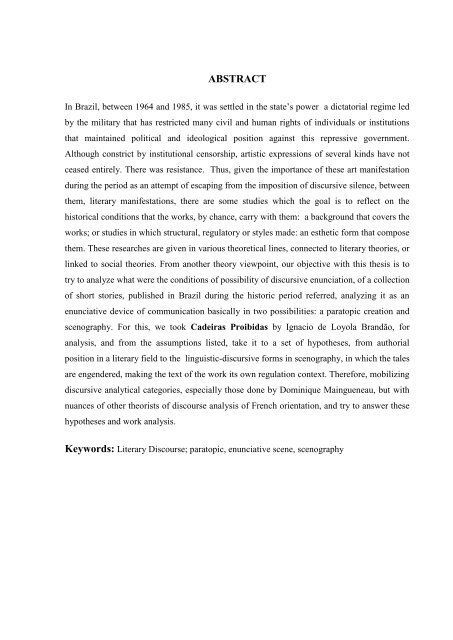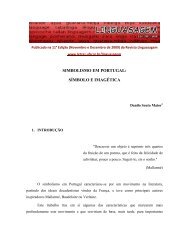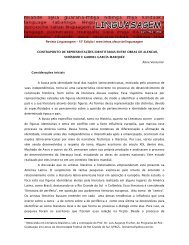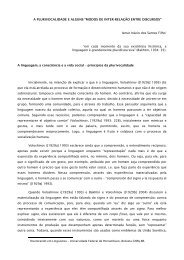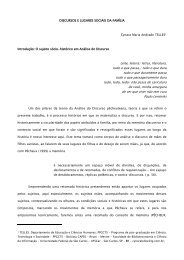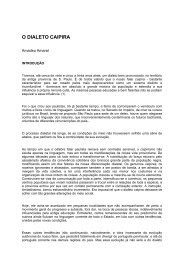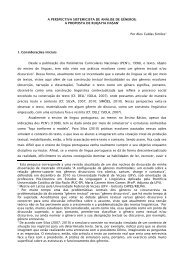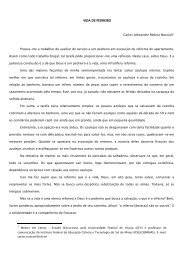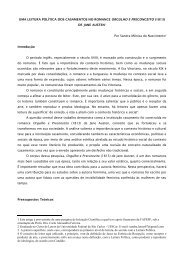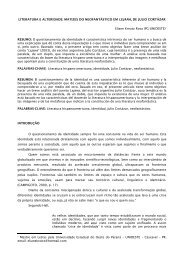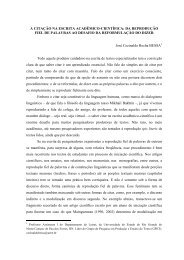ANÁLISE DISCURSIVA DA LITERATURA COMO DISPOSITIVO ...
ANÁLISE DISCURSIVA DA LITERATURA COMO DISPOSITIVO ...
ANÁLISE DISCURSIVA DA LITERATURA COMO DISPOSITIVO ...
You also want an ePaper? Increase the reach of your titles
YUMPU automatically turns print PDFs into web optimized ePapers that Google loves.
ABSTRACT<br />
In Brazil, between 1964 and 1985, it was settled in the state‘s power a dictatorial regime led<br />
by the military that has restricted many civil and human rights of individuals or institutions<br />
that maintained political and ideological position against this repressive government.<br />
Although constrict by institutional censorship, artistic expressions of several kinds have not<br />
ceased entirely. There was resistance. Thus, given the importance of these art manifestation<br />
during the period as an attempt of escaping from the imposition of discursive silence, between<br />
them, literary manifestations, there are some studies which the goal is to reflect on the<br />
historical conditions that the works, by chance, carry with them: a background that covers the<br />
works; or studies in which structural, regulatory or styles made: an esthetic form that compose<br />
them. These researches are given in various theoretical lines, connected to literary theories, or<br />
linked to social theories. From another theory viewpoint, our objective with this thesis is to<br />
try to analyze what were the conditions of possibility of discursive enunciation, of a collection<br />
of short stories, published in Brazil during the historic period referred, analyzing it as an<br />
enunciative device of communication basically in two possibilities: a paratopic creation and<br />
scenography. For this, we took Cadeiras Proibidas by Ignacio de Loyola Brandão, for<br />
analysis, and from the assumptions listed, take it to a set of hypotheses, from authorial<br />
position in a literary field to the linguistic-discursive forms in scenography, in which the tales<br />
are engendered, making the text of the work its own regulation context. Therefore, mobilizing<br />
discursive analytical categories, especially those done by Dominique Maingueneau, but with<br />
nuances of other theorists of discourse analysis of French orientation, and try to answer these<br />
hypotheses and work analysis.<br />
Keywords: Literary Discourse; paratopic, enunciative scene, scenography


